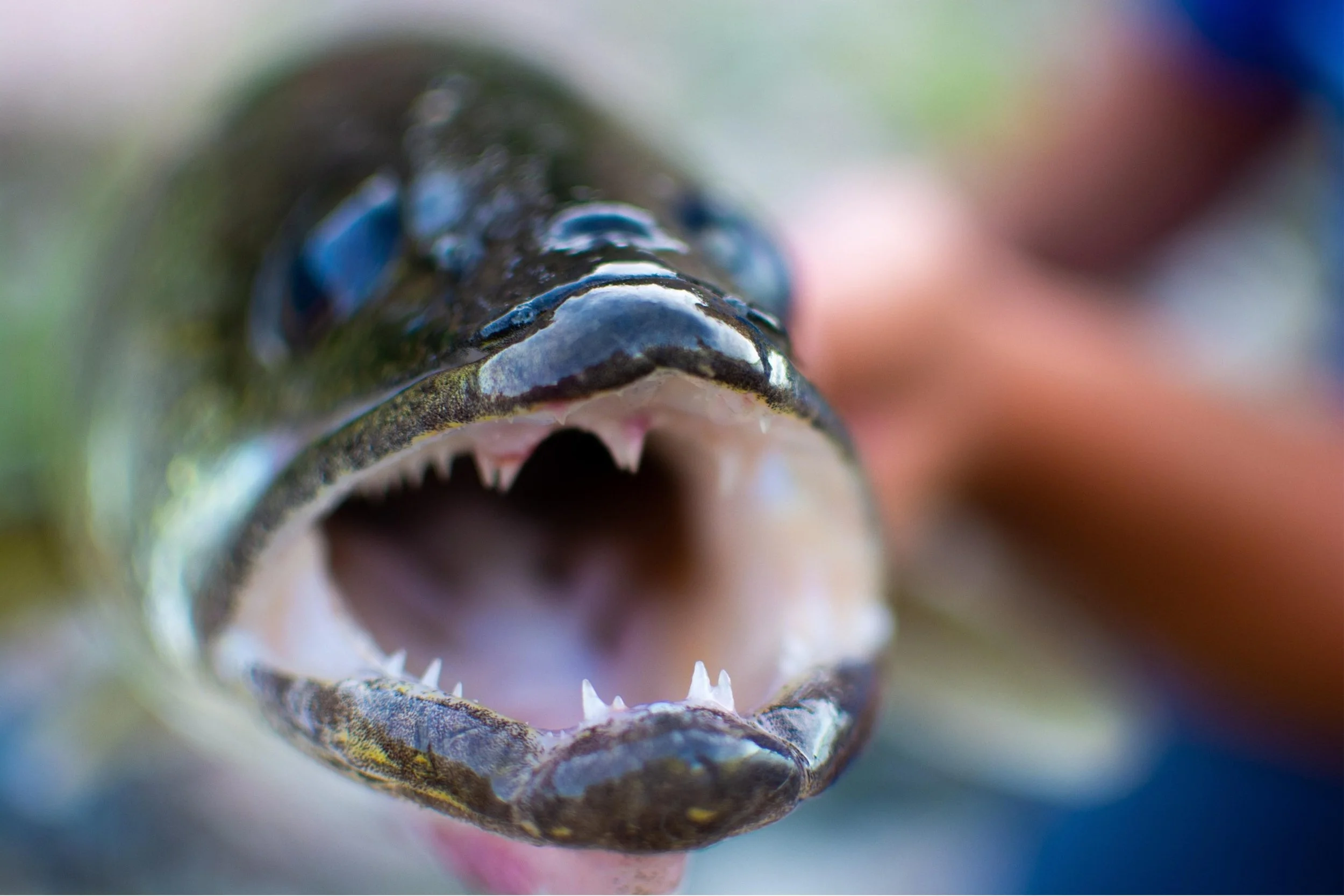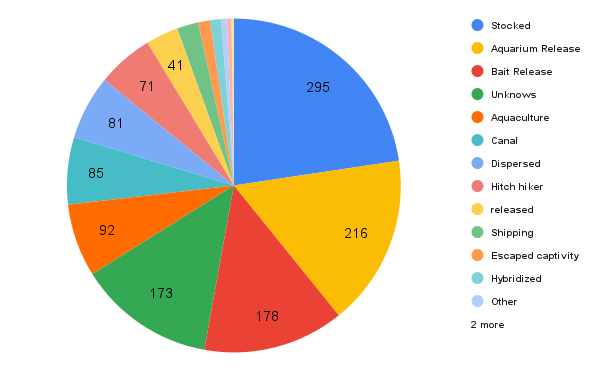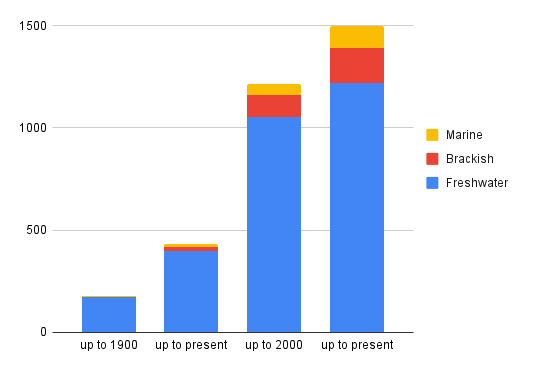Surprising Sources of Aquatic Invaders
The Northern snakehead is an example of an invasive fish species that has been introduced potentially due to human activities.
Diverse pathways, known as vectors, can facilitate the introduction of aquatic invasive species. The presence of these invasive species can disturb local ecosystems, harm native species, and lead to a decline in biodiversity.
Multiple factors contribute to the introduction of aquatic invasive species, including scenarios such as their accidental release from home aquariums, their escape from ornamental ponds in residential backyards, and their unintentional transportation via ships.
Data from the United States Geological Survey (USGS) shows that the most common intentional pathway for non-native fish introductions is stocking, meaning fish are released purposefully into waters. The most common unintentional pathways for non-native fish introductions are aquarium releases and bait releases, meaning the release of fish used as pets or from aquariums or release of fish used as bait.
Figure 1: Pathways of Non-native Fish Introductions in the United States.
The figure indicates that intentional stocking is the primary method of fish introductions (22.6%), followed by aquarium releases (16.6%) and bait releases (13.7%).
Invasive species introduction into freshwater systems is particularly concerning. Freshwater ecosystems boast greater biodiversity per surface area than marine and terrestrial ecosystems and play a vital role in nutrient and water cycling, translating into valuable goods and services for human societies. Freshwater systems are especially vulnerable to invasive species introductions because they are often interconnected, sharing water and nutrients with surrounding areas, which facilitates the rapid spread of these species. Additionally, freshwater systems often have limited resilience to environmental changes, making them more susceptible to long-term damage.
Figure 2: Aquatic Species Introductions in the United States Over Time.
This bar graph, based on data from the United States Geological Survey, illustrates the cumulative number of aquatic species introduced into U.S. ecosystems over time, categorized by freshwater, brackish, and marine environments. The increasing trend demonstrates a significant rise in introductions, particularly in freshwater habitats, up to the present day.
Given the fragility of freshwater systems and their valuable biodiversity, and considering that most unintentional introductions of fish species are caused by aquarium and bait releases, it is crucial to mitigate these risks as much as possible. Please refrain from releasing unwanted aquatic pets into the wild and avoid using live fish as bait.
Resources
United States Geological Survey on “Introduced Aquatic Species in the US”. Read more
“Aquatic invasive species: Challenges for the future” by Havel et al. Read more
“Patterns of Live Baitfish Use and Release among Recreational Anglers in a Regulated Landscape” by McEarchran et al. Read more
This article aims to highlight the various pathways of fish introductions and their subsequent impacts on aquatic ecosystems. Understanding these pathways is crucial for developing informed strategies to protect the delicate balance of our freshwater environments.



